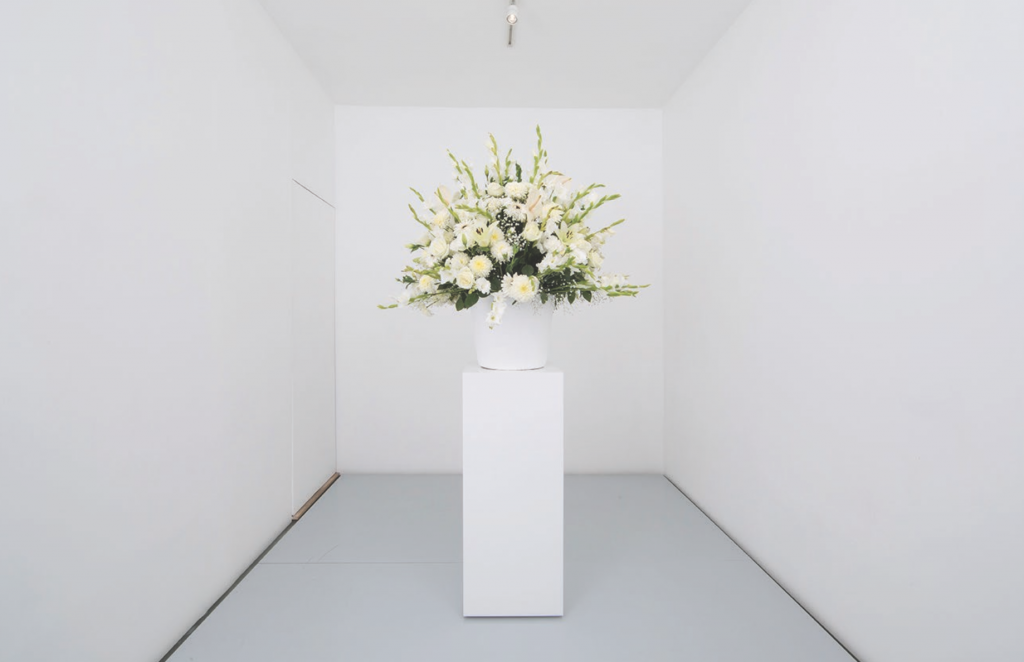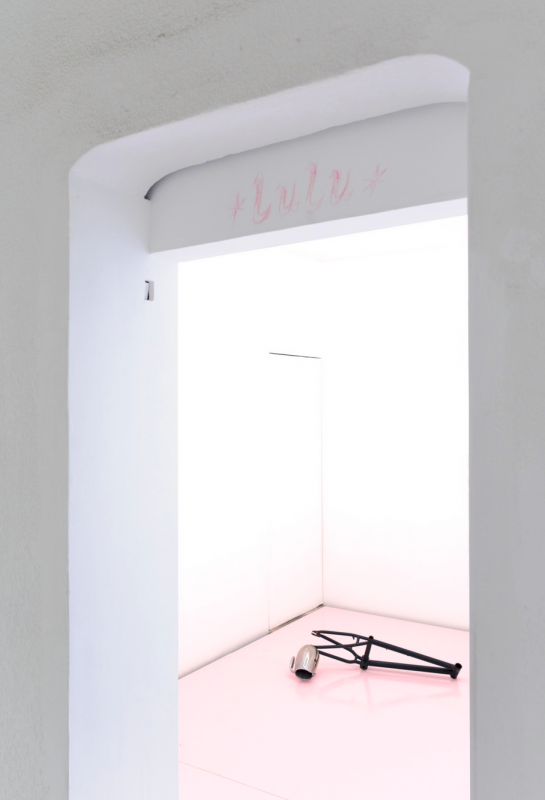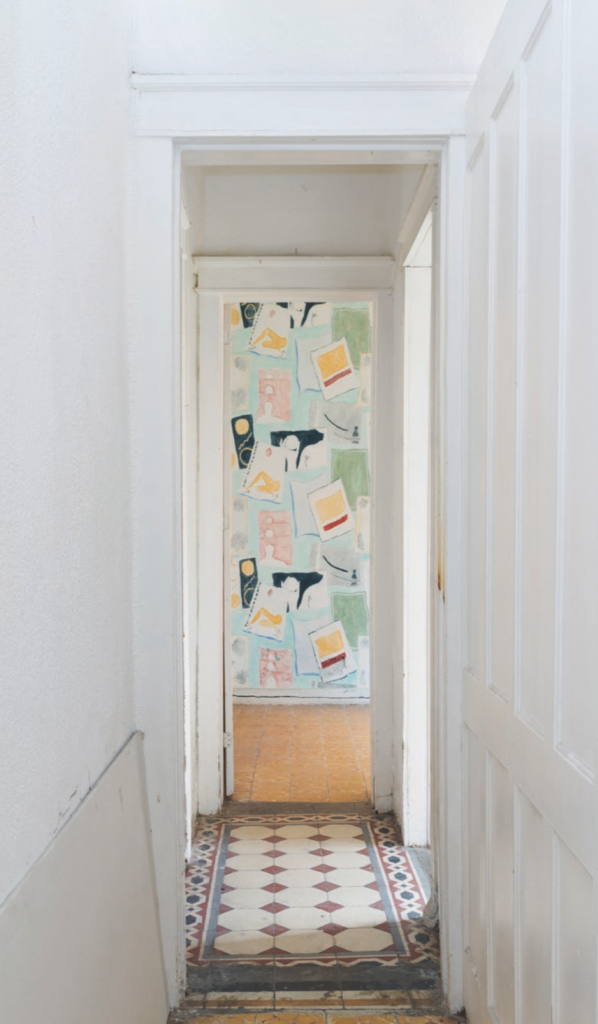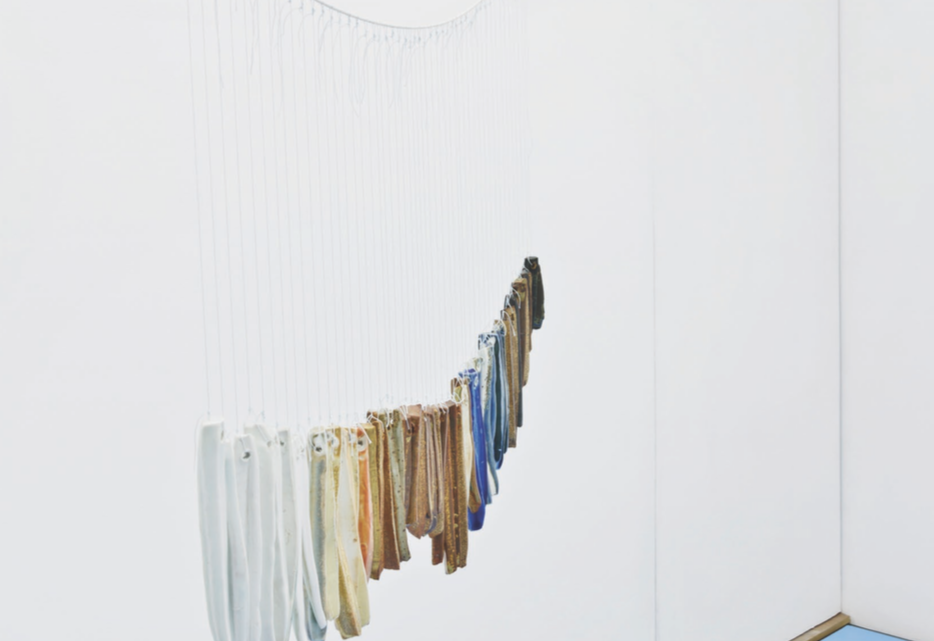[This interview also appears in Spanish in DFAQ.]
Why is Lulu small?
Because it’s located in the re-purposed, white-cubed living room of an apartment. Smallness also thankfully obliges us to aim for a certain much-coveted (at least by us) precision.
Who is Martin Soto Climent?
He is a Mexican artist based in Mexico City, also co-founder of Lulu.
Just what is Stewism?
Stewism is the title of a Simon Dybbroe Møller show (Lulu’s second), and either an aborted, impending, and/or maybe just a one-man movement.
What’s a project space?
Lulu is still trying to figure that out, but more or less: a quasi-informal, independent venue that concentrates on the craft of making exhibitions (although we do present talks and have started producing publications).
Always one artist at a time?
Not always, but often. Stay tuned for our forthcoming Lulennial: A Slight Gestuary (the first edition of a biennial) in Feb 2015.
How has the program been received in D.F.?
As far as I can tell: with a mixture of delight, suspicion, indifference, support, and appreciation.
How about the audience?
We have a dedicated audience, which is growing in and beyond D.F. At Aliza Nisenbaum’s opening, we had a group of kids from Guadalajara. After they stared at the show for about an hour, I went up and talked to them. It turned out that it was the first time they had been to Lulu, but they knew the whole program inside out. It knocked the wind out of me. I gave all of them free Aliza Nisenbaum catalogs.
What does Lulu mean?
Lulu is a name. We borrowed it from our local, neighborhood juicer, Jugos y Licúados Lulu, where we have breakfast and fresh juice almost every morning. She has been to the space a number of times and loves it.
Are there other programs like Lulu in D.F.?
No, but there are other project/artist-run spaces like Bikini Wax, whose program is often fresh out of school and much more local, or Lodos Contemporaneo, which is more post-Internet and international. Both are run by talented artists in their mid twenties, and both are serious and great.

Willem de Rooij, “Bouquet IX,” 2012. White ceramic vase, plinth, 10 different sorts of flowers. Photograph by Guillermo Soto. Courtesy Daniel Buchholz Galerie, Cologne and Berlin, and Lulu, Mexico City.
How would you sum up the curatorial voice of Lulu?
Prioritizing idiosyncrasy and a certain resistance to language, it is composed of artistic practices that are characterized by an intimate relationship with their material vocabulary and a perfect integrity of form and content. As for the overall arc, I think it would be easy to perceive our entire program as an ideally cohesive, linear group show.
What do you mean by a “resistance to language”?
I mean art that actually puts up a resistance to language, which is difficult to explain by virtue of either not departing from principles or protocols, or not yet being codified either by formulas or procedures (i.e., international-style conceptualism). Art, in other words, that does not originate in language, and is therefore not in the service of and does not seek to illustrate an idea, but is nevertheless inseparable from an idea.
Small work for a small space?
We don’t invite them because they work small, but because they are or can be precise, or aphoristic in their presentation. Artists are often surprised, then relieved, by the scale of Lulu. For example, Nina Canell had just opened a solo at Camden Arts Centre in London and was preparing a solo at Moderna Museet Stockholm at the time of her show here. She found the scale of Lulu to be refreshing and manageable.
Mostly artists from elsewhere?
The idea is to show artists who have had little or no exposure in Mexico, which means, at least for the time being, presenting artists from elsewhere. We have plans to eventually feature local, Mexican artists though. This reasoning, however, is motivated by and perhaps secondary to a desire to show a kind of art (which is as idiosyncratic as it is preoccupied with form) you don’t see much of in Mexico.
Do you invite the artists to address the context of Mexico?
Not really, as we’re not really interested in replicating a kind of ‘90s biennial method of socially motivated, context-specific practices. Some artists do inevitably end up responding to the local context though, either deliberately or through coincidence. I think this happens because a criterion for inviting an artist is how well the work will resonate with the local context and vice versa. There has to be some oblique and unexpected crossover or compelling point of friction, otherwise it doesn’t make much sense.
What does it mean to introduce an artist to Mexico?
Good question. At the risk of contradicting myself, I would like to think that it is like introducing a foreign word into a language and thereby expanding its vocabulary. The beautiful thing about that is, as we all know, foreign words are almost always changed by the languages that adopt them. It’s a two-way process, which Lulu is in the humble business of perpetuating (or is that perverting?).

Michael E. Smith. Image courtesy of the artist and Lulu. Photo by Martin Soto.
What happens during the opening day?
We generally have bilingual talks, inviting local critics, artists, and curators to get involved. It is really helpful in connecting what is often totally unknown work to the local context.
Has artwork appeared in other parts of the building?
Yes, in our Allison Katz and Camilla Wills show, in which they painted a giant wall-painting in another room, and our recent Kate Newby show, which takes place in the courtyard, on the sidewalk outside and the neighbor’s roof.
Might Lulu grow or move?
Yes, I hope Lulu will grow and become a non-profit. Move we eventually will, but not for at least another year or maybe two. After publishing our first catalog by Aliza Nisenbaum, we also want to expand that side of our activities and publish more books. We’re currently in discussion with Nathaniel Dorsky about a Mexican edition of Devotional Cinema. And we’re also thinking about starting a printed quarterly called Guayaba.
Anything for sale?
Depends on the show. So yes, but not at all a criterion for what we show. We’re just trying to make ends meet. Otherwise everything is paid for by Martin and me.
Is opening a very small space implicitly a statement against the gargantuan (biennial) exhibition?
It was not meant to be, but it seems that it is, or that it is becoming so. We are not exactly against large exhibitions or initiatives, but we are for precision, which is something that is difficult to attain in the large-scale exhibition. Lulu could, however, be seen as a critique of the maximalism and expansionism that seems to dominate the art world—and not just the commercial art world, but the art world as a whole.
What kinds of interesting/productive things has working with tight restrictions yielded?
It’s hard to say. The question implicitly assumes that Lulu is somehow handicapped, when I think just the opposite. I see palatial spaces like the Palais de Tokyo in Paris, or, say, Gagosian in Chelsea, NYC, and I almost feel bad for the artists that have to fill them up or get crushed by them. For me, those spaces are actually handicapped by their excess. But then maybe this is just very personal—after all, I have an almost fanatical adoration of economy. I love Borges and the short stories of Donald Barthelme. I think the only perfect novel I have ever read is Spanking the Maid by Robert Coover, and that perfection is indivisible from its economy. Granted these are literary analogies, but I think there’s a lot to be said for distilling things down to what is most essential to them and thereby aiming for an ideal simplicity.
Something about Lulu that surprised you?
Perhaps the thing that has surprised me the most is the extent to which people really embrace the whole experience—of coming into our home/studio, sitting in the yard with plants, getting a juice at Lulu, being in this part of town, etc. They see the whole process as part of seeing a show at Lulu.
Because this is a self-funded endeavor, it’s by default a kind of generous act (for D.F., for the world, for the artists), or is it?
Indeed, or is it? I’m glad you asked this. I once had a local artist come to Lulu and ask me why we were doing this—if it was merely to show off our great taste or if it was a vanity project. These seemed like incisive questions/critiques, but I’m not so sure they were because there is no way to defend one’s self against them, or at least not the first “question,” which necessarily implies that art should be utilitarian, do something other than merely reflect the so-called refinement of whoever promotes it. That it must be about something other than taste, and as such, ultimately serve the greater good (the taste issue is a funny one—this paradoxical taboo totally replicates the logic of political correctness, implicitly supposing that taste were something that could ever be completely removed from art).
As for the vanity project question, this also seems to be a non-issue. For even if it were, even if in some hypothetical, worst case scenario Lulu was just some elaborate subterfuge to amass cool capital and enrich our sex lives, and was not about a love of art, pure and simple, local inhabitants of Mexico City would still be seeing artists they have never seen in Mexico. Besides, we’re wholly financially responsible for what we do; we have received no public funding. In other words, we’re not taking from the public coffers for our own good. All that said, I’d prefer not to think of it as having anything to do with generosity because that puts us in a kind of noble philanthropic position. Although we believe we have created a win/win situation with Lulu, in the end it is simply about doing our best to make good, well organized, professionally presented exhibitions
What’s it like living with and around these artworks? How do some works age differently?
It is wonderful, a great privilege. But also a little stressful. Some of the shows we make, such as our recent Kate Newby exhibition, are quite delicate, and need to be treated with great care. But I love being able to see her show every day, see how plants, for instance, grow around a piece outside, or how the rain has modified a piece installed on the sidewalk. It is a very unique experience.

Allison Katz and Camilla Wills, “Perra Perdida” (Mural), 2013. Paint on wall. Photograph by Martin Soto. Courtesy of Lulu, Mexico City.



